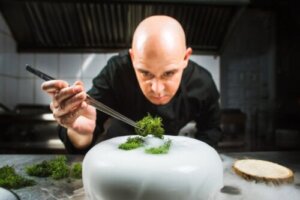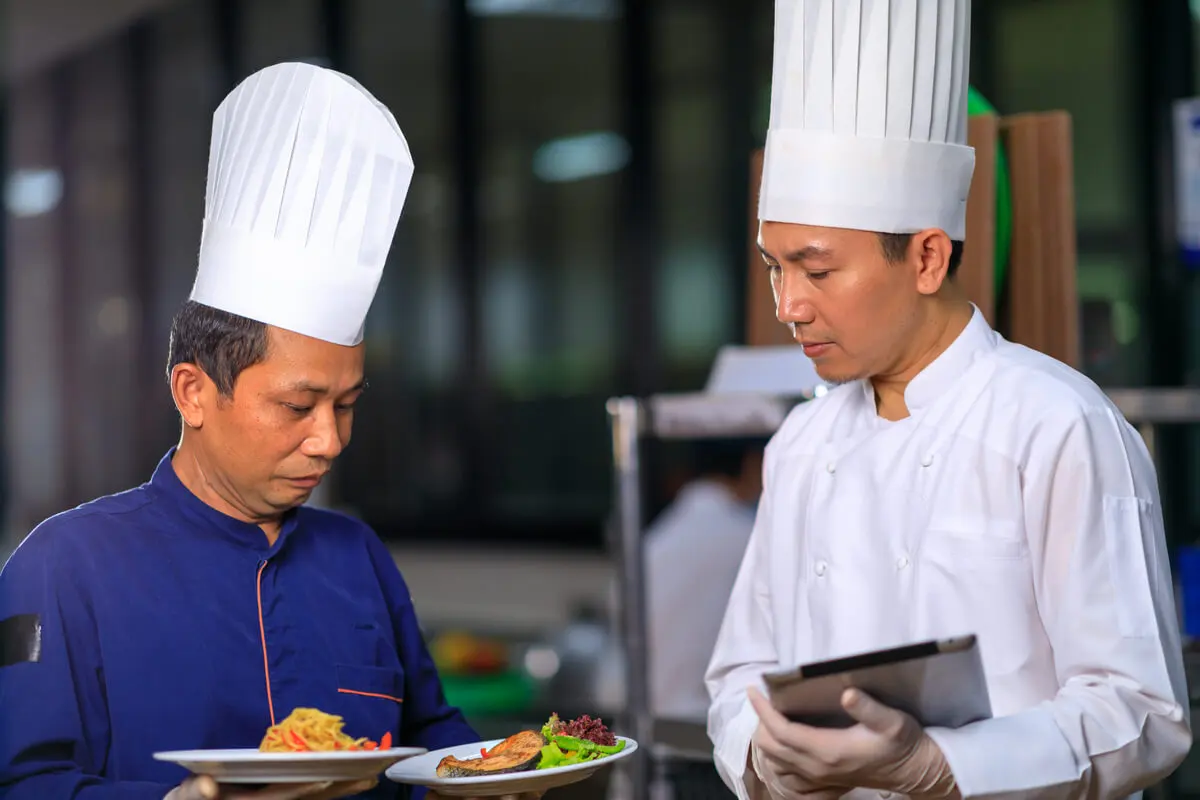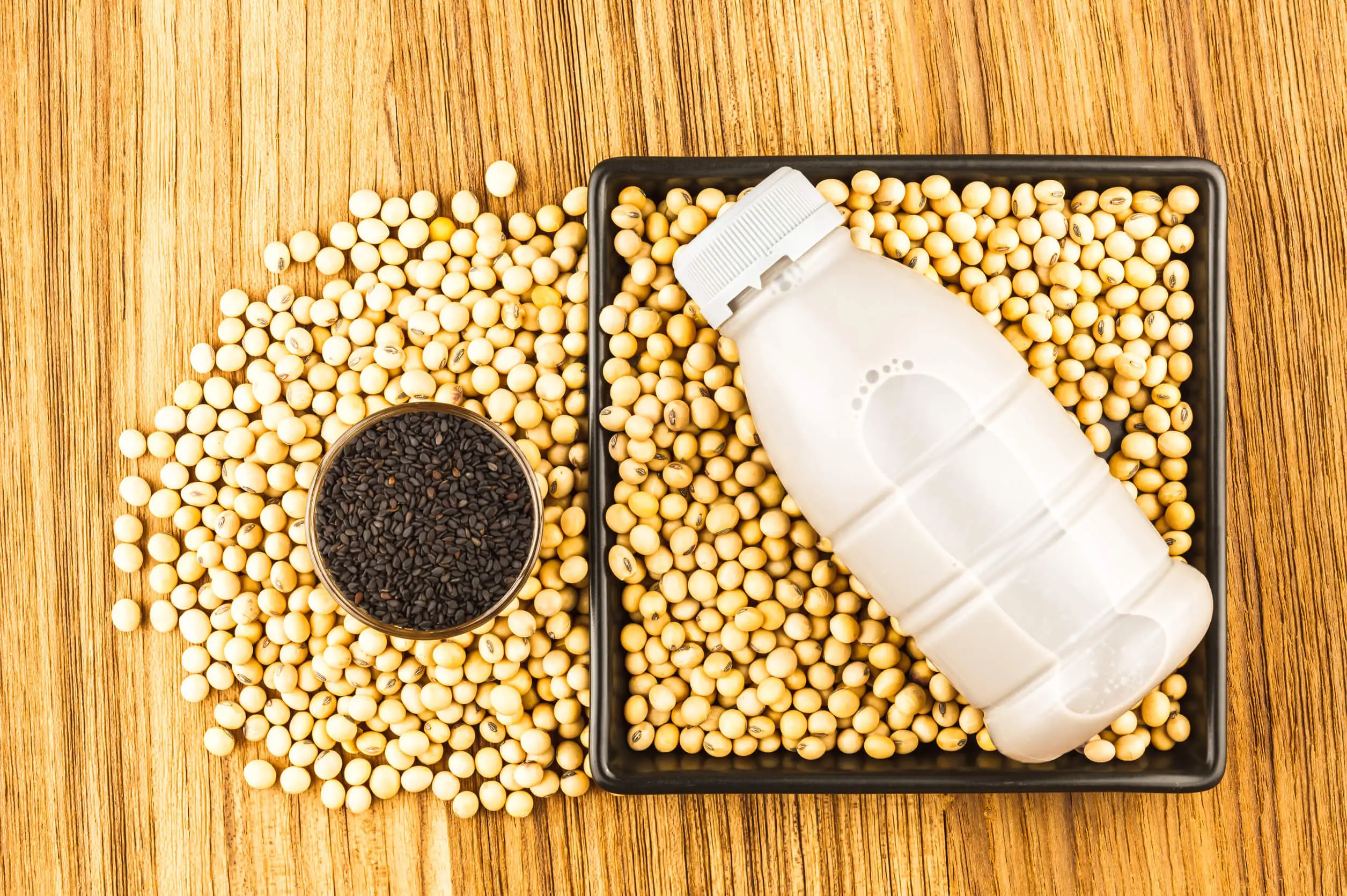What Is Molecular Gastronomy and What Are Its Advantages?

Molecular gastronomy is here to stay with its color, science, smoke and art! It’s a style that has conquered the best chefs in the world ín their quest to offer high-quality products with perfect finishes. It has its origin in the meeting of culinary art and science.
It’s based on the investigation of the transformations that food undergoes at a chemical and physical level to enhance its organoleptic properties. This style makes use of technological innovations to apply them to food and achieve dishes with a higher level of elaboration.
History of molecular gastronomy
The first steps of molecular gastronomy were taken in 1969. The researcher and physicist Nicholas Kurti gave a conference called The Physicist in the Kitchen, in which he expressed a deep sadness, because he said that while we measure the temperature in the atmosphere of Venus, we ignore the temperature inside soufflés.
Molecular gastronomy emerged in 1988 as a scientific discipline thanks to the work of Nicholas Kurti and Hervé This, who defined it as a scientific exploration of all things culinary, which evaluates food transformations. This is how it’s expressed in Mariana Koppman’s book Molecular Gastronomy Manual by Mariana Koppman.
In this sense, it has served to understand the reason for many culinary phenomena and to improve techniques to preserve the properties of food. In fact, it integrates knowledge from various areas of knowledge, such as chemistry, physics, anthropology and biology.
This type of cooking has been popular in France, especially since 1990. Since then, it has been integrated into cuisines around the world. Although it sounds like a strange and specialized type, vacuum packaging and the use of the Thermomix machine are already part of molecular cuisine.

We recommend reading: Abalone: The Most Expensive Mollusk in the World
Characteristics and techniques of molecular cuisine
Molecular cuisine is based on making the kitchen part of a laboratory. One of its main characteristics is deconstruction, as it seeks to undo, recompose and apply various techniques to explore the textures of food.
It also aims to make diners enjoy an experience apart from simply the flavors. For this reason, it innovates with the presentation. Likewise, it’s usually signature cuisine, but it’s also possible to apply it at home.
Hyperfreezing with nitrogen
In recent years, liquid nitrogen ice cream has become popular. It’s a technique that uses this gas in its liquid state, which is maintained at -19 degrees Celsius (-2.2 Fahrenheit) to prepare cold dishes, especially jellies, ice creams and desserts. However, it also helps to achieve creamy textures with a hard coating.
Basically, the food is immersed in a kind of freezing cauldron. However, nitrogen is a difficult gas to handle, and, if not handled correctly, it can have dangerous consequences. For this reason, it’s a technique that should be used only by specialists and professionals.
Spherification
This is another technique that has become very popular in haute cuisine restaurants. It involves turning liquid foods into small gel spheres.
They’re obtained by using sodium alginate and calcium chloride. This technique, in addition to preserving foods so that they create an explosion of flavor in the mouth, has also been used in cocktails.
Freeze-drying
This is a process that eliminates water from foods by drying them in a vacuum and at low temperatures. First, freezing is done and then the water is sublimated, because it’s introduced into a vacuum chamber.
The best thing is that it maintains up to 98% of the properties of the food. It is usually used with cereals and fruits.
We recommend reading: What Is Batch Cooking?
3D printer
This is one of the most modern techniques in molecular cuisine. It allows you to “print” food in different shapes.
The raw material is usually chocolates or pasta. It’s an invention that’s taking the world of confectionery to another level. Likewise, edible paper can also be printed.
Vacuum cooking
This type of molecular cooking technique is used for cooking meats and vegetables. To achieve this, the food is placed in a vacuum-sealed bag and cooked in this package at a constant temperature. For this reason, it allows the preservation of the meat juices and maintains its tender texture.
Creation of foams
This technique is relatively easy. For this reason, it is often used in many restaurants.
It consists of the creation of foams from different foods, using special machines that combine food stabilizers and starches. In most cases, a soybean derivative called lecithin is used.

Advantages of molecular cuisine
You may have already realized that molecular gastronomy has great benefits. First of all, it lets you enhance the flavor of food and, depending on the technique, to preserve the properties of nutrients.
Food isn’t fried and flour isn’t usually used, so it’s a type of cuisine suitable for celiacs.
On the other hand, it lets you create innovative recipes with a very artistic and untraditional aesthetic. As we have already mentioned, it’s ideal for obtaining striking textures. For this reason, it’s said that it creates taste experiences beyond a simple meal.
Finally, its techniques can extend the shelf life of food. With vacuum packaging, drying and freeze-drying, foods can be preserved longer without losing nutrients.
All cited sources were thoroughly reviewed by our team to ensure their quality, reliability, currency, and validity. The bibliography of this article was considered reliable and of academic or scientific accuracy.
- Ardón, A. L. (2009). NUEVAS TENDENCIAS GASTRONÓMICAS: LA COCINA MOLECULAR”. Universidad del Itsmo.
- Contreras, E. (2021, junio 4). Cocina molecular: mucho más que una tendencia. Institucional Colombia. https://www.institucionalcolombia.com/gastromarketing/comunicacion/cocina-molecular-elementos-historia/
- Koppmann, M. (2015). Manual de gastronomía molecular. El encuentro entre la ciencia y la cocina. Siglo Veintiuno. http://el.uy/doc/gastronomia/Koppmann,%20Mariana.%202011.%20Nuevo%20Manual%20de%20Gastronom%C3%ADa%20Molecular.%20%282015%29.pdf
This text is provided for informational purposes only and does not replace consultation with a professional. If in doubt, consult your specialist.








